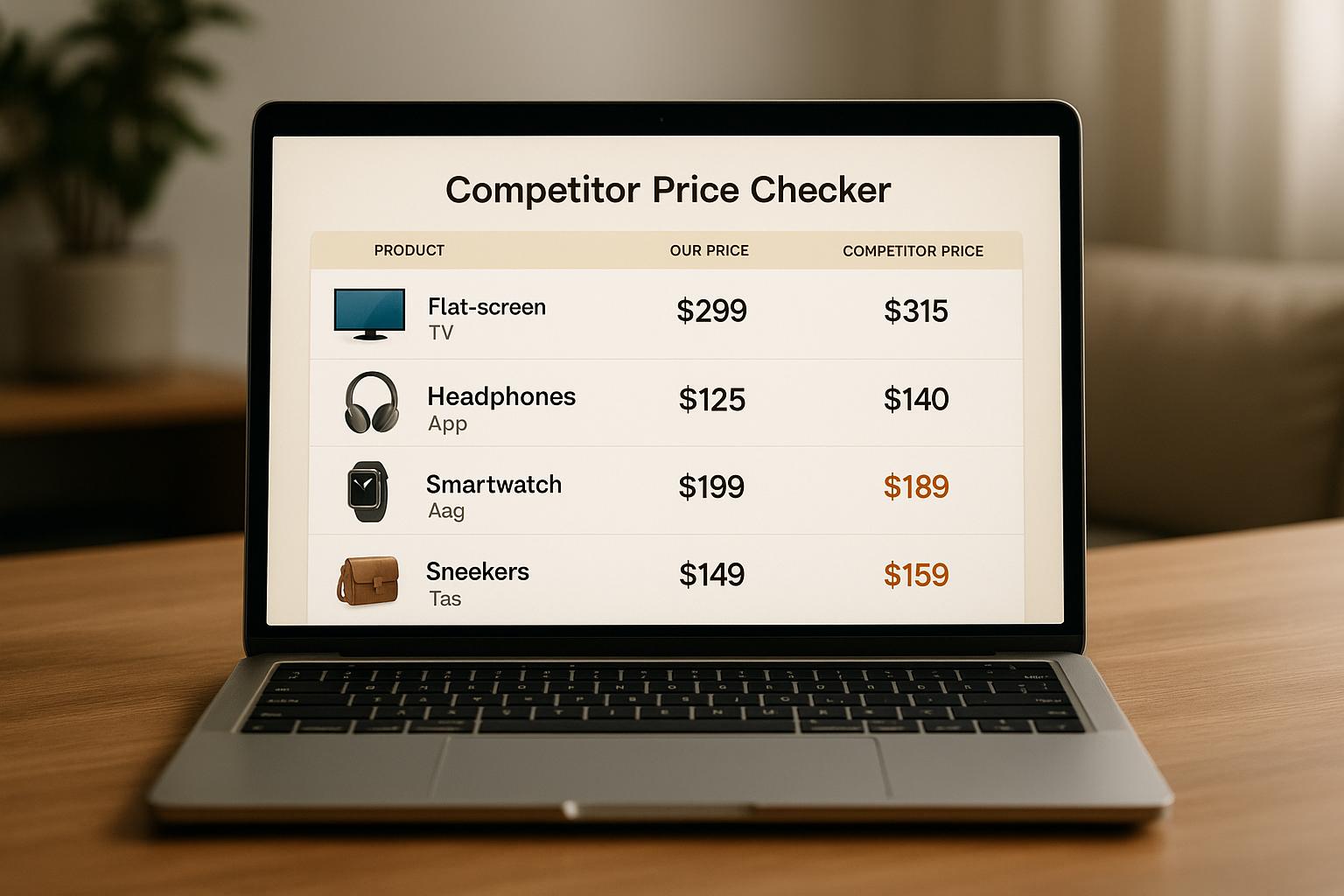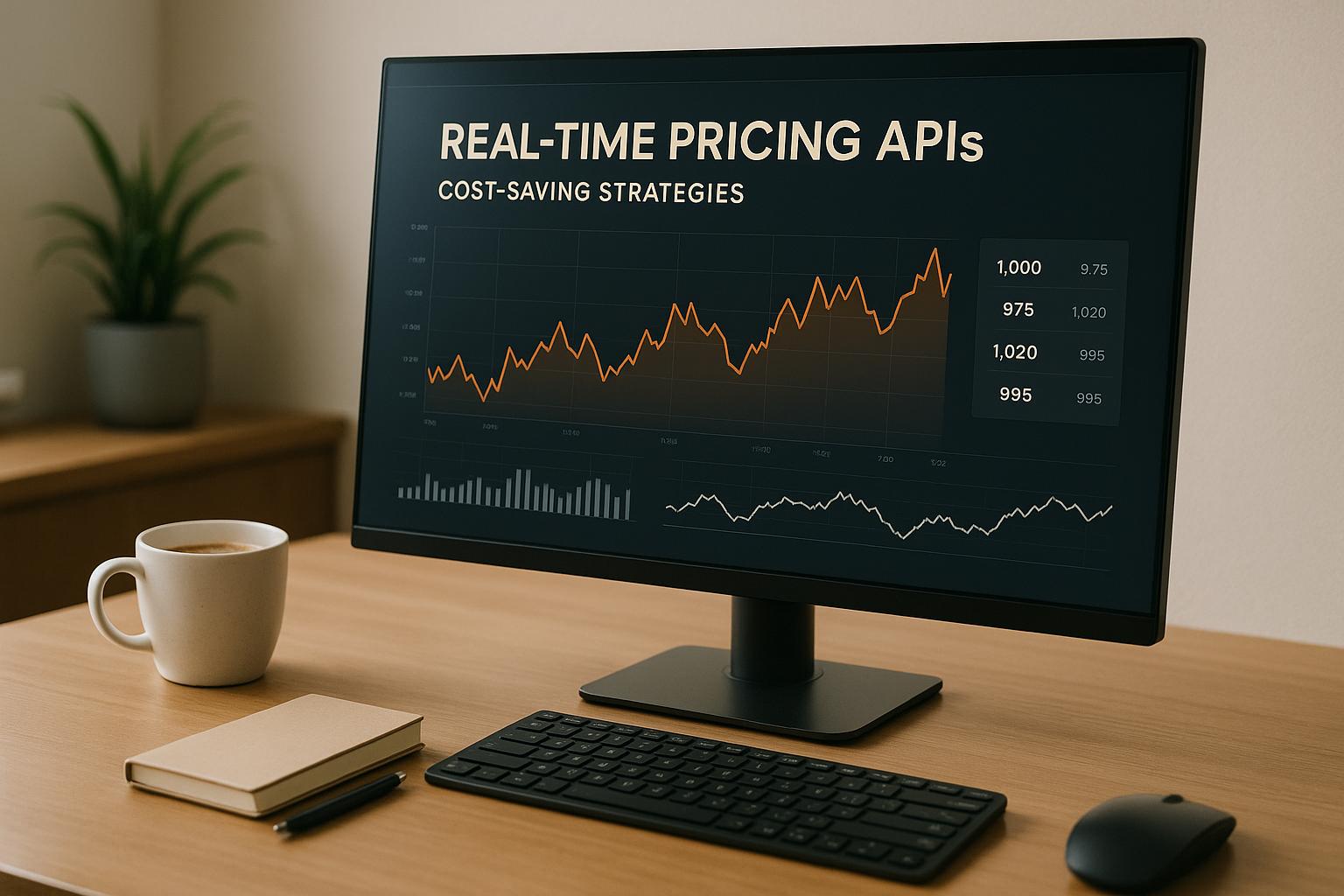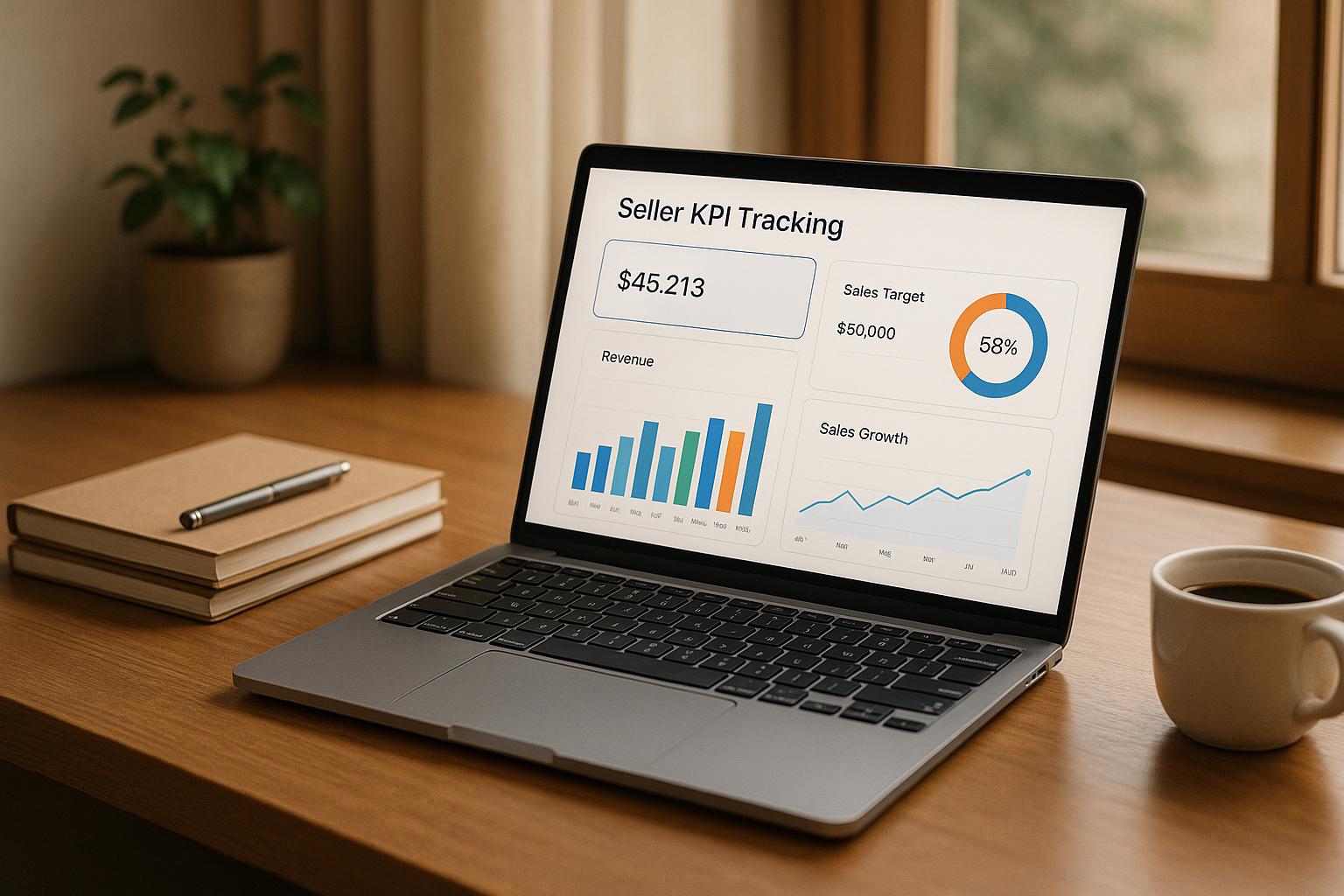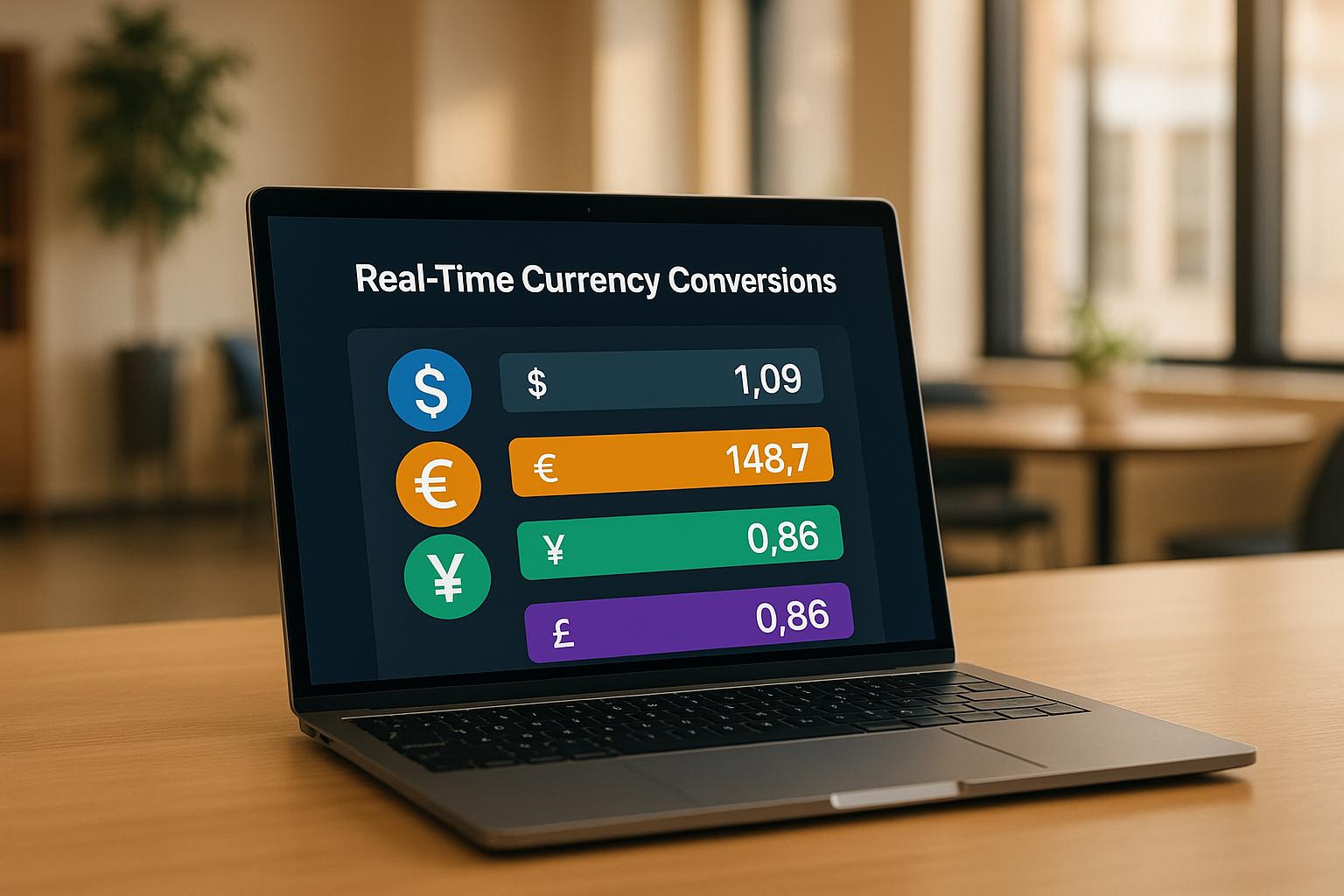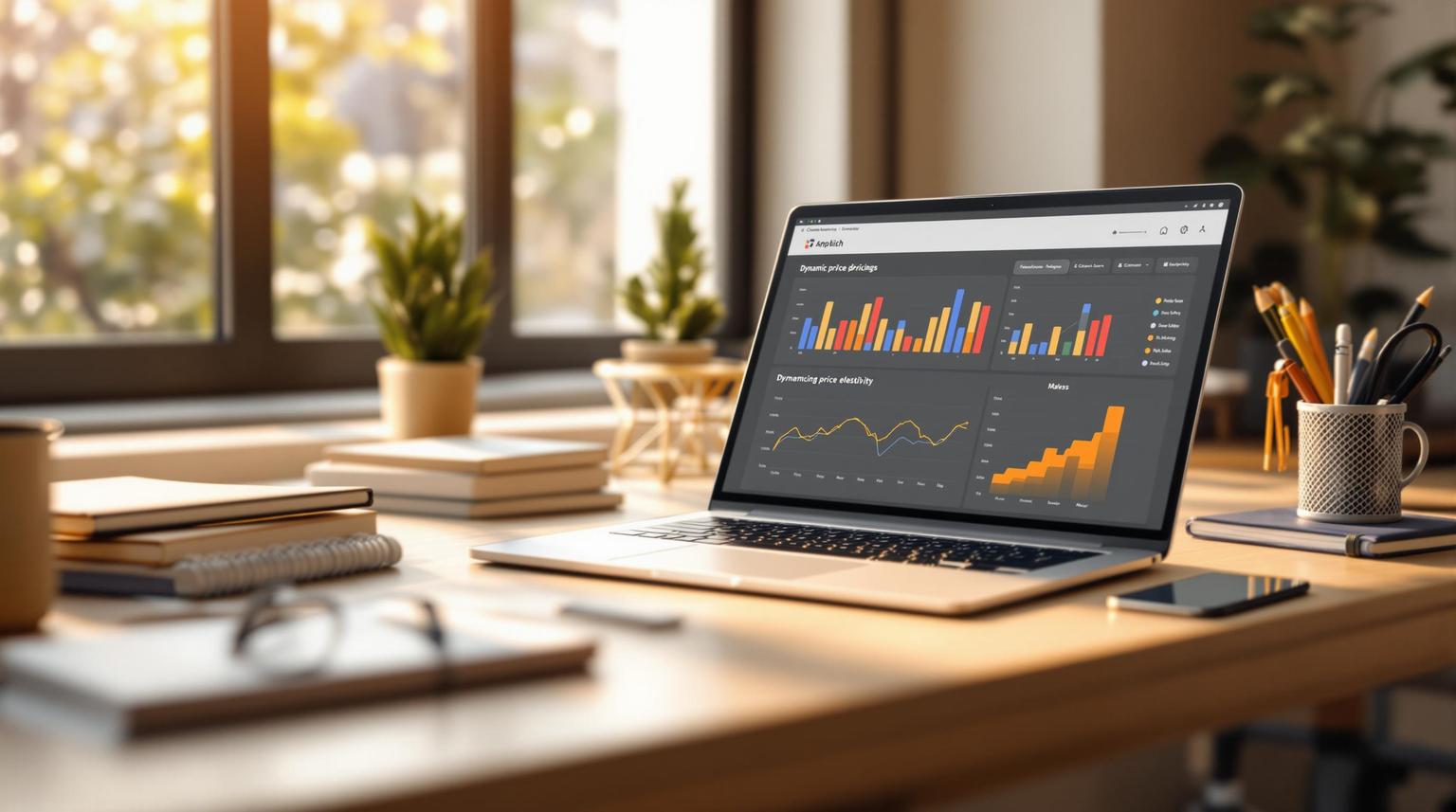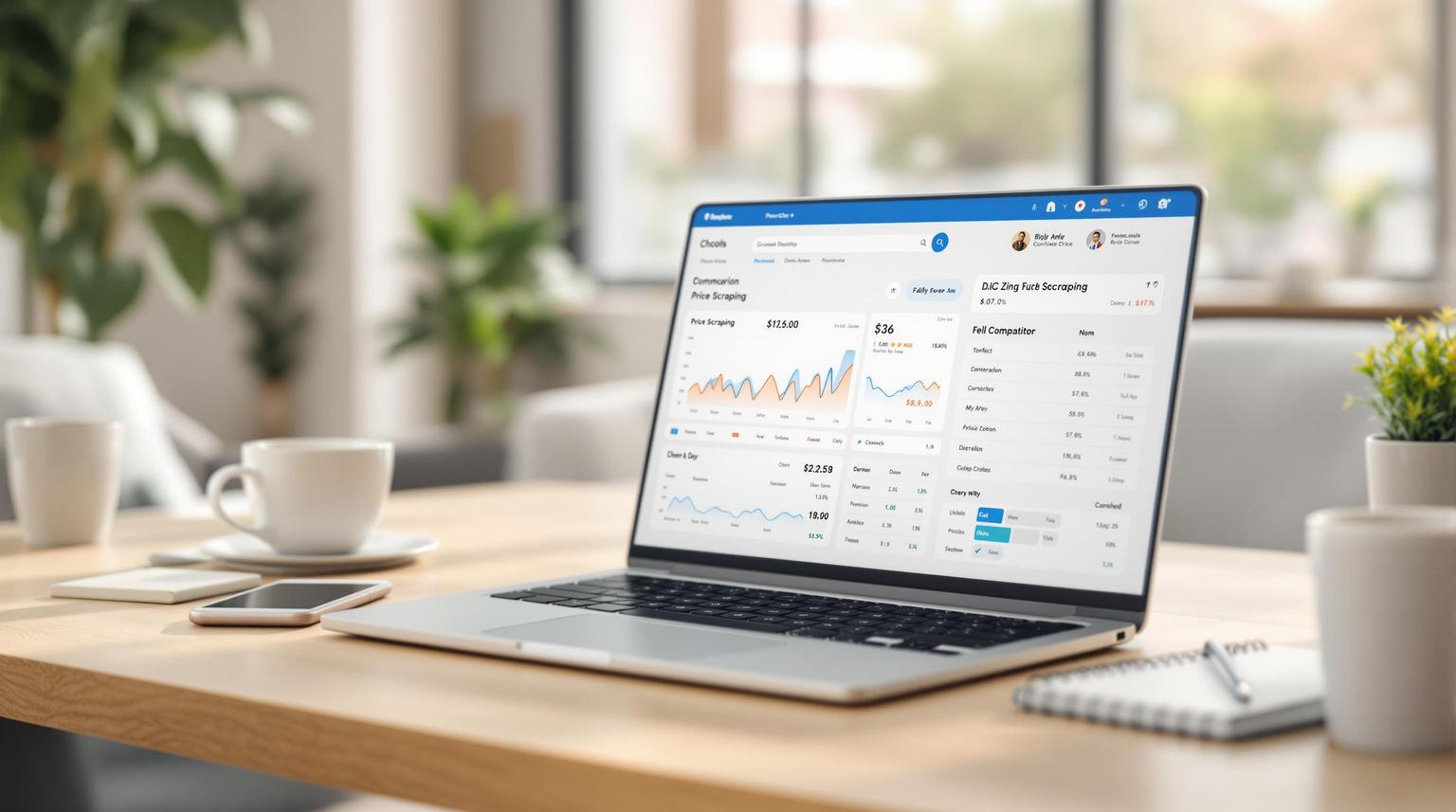Google Shopping Data for Launches

July 17, 2025
Google Shopping data is a powerful resource for businesses launching new products in the U.S. It provides real-time insights into pricing trends, competitor strategies, and consumer behavior. With 36% of product searches starting on Google and shopping ads commanding up to 85% of clicks, this platform offers critical tools for success.
Key Takeaways:
- What It Includes: Pricing, product attributes, seller info, availability, shipping options, reviews, and promotions.
- Why It Matters: Helps businesses adjust pricing dynamically, validate market demand, and analyze competitors.
- Conversion Advantage: Google Shopping ads have a 60%-80% higher conversion rate than traditional text ads.
- Optimization Tips: Focus on product titles, pricing, high-quality visuals, and accurate categorization to improve visibility.
- Automation Tools: Platforms like ShoppingScraper simplify data extraction, monitoring, and analysis for better decision-making.
Using Google Shopping data ensures businesses stay competitive and informed throughout every stage of a product launch.
How to Extract and Optimize Product Data from Google Shopping
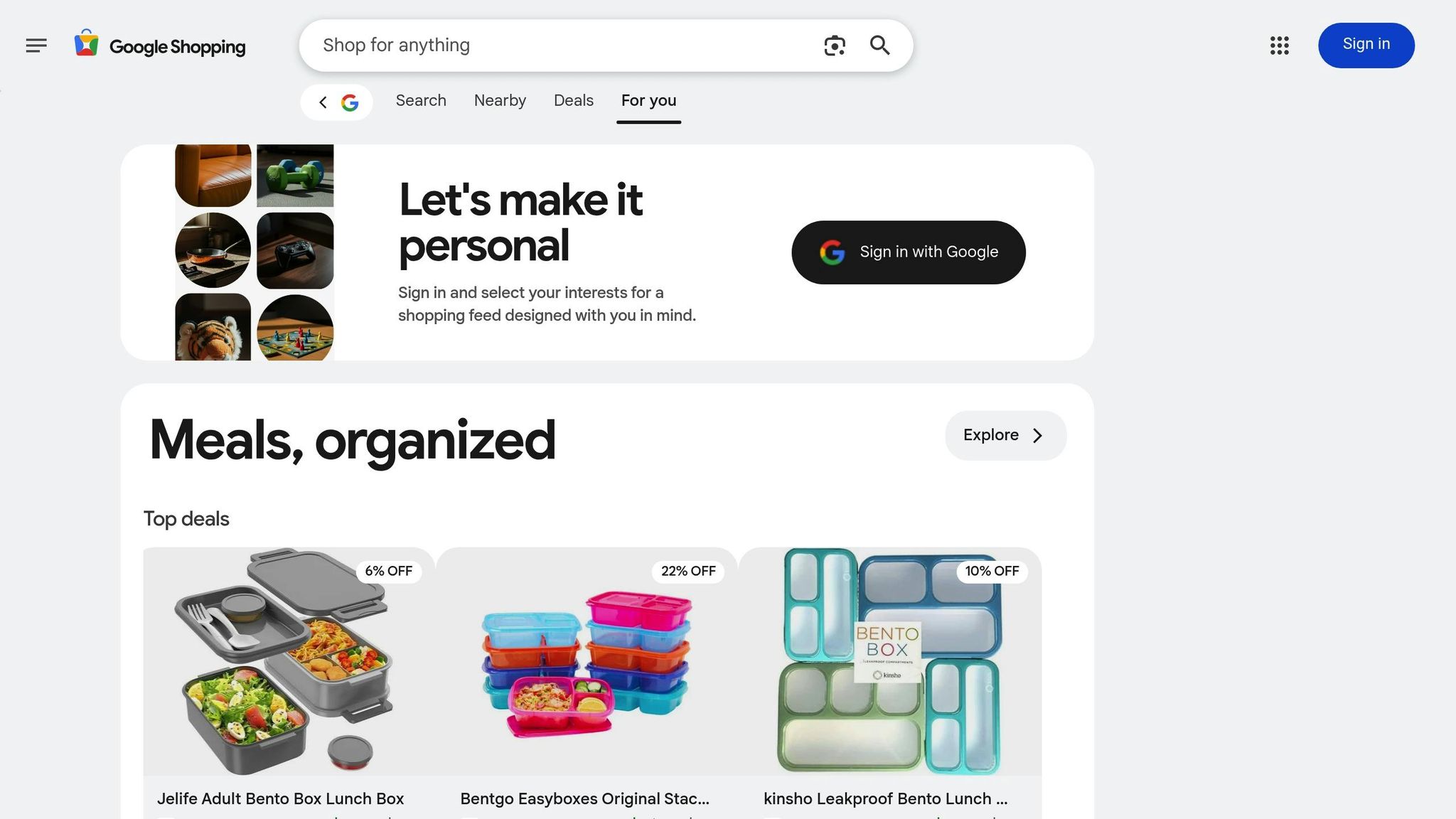
Launching a product successfully often hinges on how well you extract and refine data from Google Shopping. This platform provides a wealth of information, and using it effectively can significantly influence your strategy. By following a structured process, you can ensure the data is accurate, compliant, and actionable, setting the stage for a strong product launch in the competitive U.S. market.
At its core, the extraction process focuses on gathering the structured data Google uses to match products with relevant search queries. This data must not only meet Google's quality standards but also provide insights that can shape your launch strategy. The optimization phase, on the other hand, refines your product feeds to boost visibility and drive conversions.
Key Product Data Points to Extract
Once you’ve established a method for data extraction, focus on pulling the elements that directly impact your product’s visibility in search results. For example, product titles should include key details - like brand, product name, type, color, and size - within the first 70 characters. This helps maximize search visibility and encourages clicks.
Pricing data is another critical component. Display prices in USD (e.g., $49.99) and use real-time pricing extraction to monitor competitors, identify market gaps, and assess supply constraints. Combining this data with availability information can help you uncover opportunities and refine your pricing strategy.
Product identifiers are equally important. These include Global Trade Item Numbers (GTINs), Manufacturer Part Numbers (MPNs), and brand names. Google relies on these identifiers to ensure accurate product matching and avoid duplicate listings, which can hurt your visibility.
Visuals also play a huge role in Google Shopping success. High-quality product images - at least 800 x 800 pixels - can significantly impact click-through rates. Evaluating image quality, background choices, and presentation styles can help you understand what resonates with consumers and meets market expectations.
Lastly, product descriptions and proper categorization are essential. Clear, concise descriptions and the correct Google Product Category help Google’s algorithms understand your product and match it to relevant searches, improving your market positioning.
Best Practices for Product Feed Optimization
Optimizing product feeds means adhering to Google’s technical requirements while aligning with U.S. market standards. For instance, product titles should balance keyword inclusion with readability - providing essential details without overloading them with keywords.
Pricing must also follow U.S. conventions, using USD (e.g., $49.99), imperial measurements, and MM/DD/YYYY date formats. These details not only improve the user experience but also increase the chances of your feed being approved.
Images need to meet Google’s strict guidelines. This means no promotional overlays, text, or watermarks. Instead, use clean, white backgrounds and include multiple angles to enhance visual appeal and support Google’s visual search capabilities.
Real-time data accuracy is another critical factor. Using automated tools like Google’s Content API or scheduled updates ensures your pricing and availability information stays current. Regularly checking Google Merchant Center’s Diagnostics can help you catch and fix any feed issues promptly.
For advanced optimization, custom labels and segmentation are invaluable. Organize products by profitability, seasonal trends, or stock levels to enable more targeted bidding strategies and dynamic campaign adjustments.
Finally, performance monitoring is key. Analyzing high-performing search terms and updating product titles and descriptions based on these insights creates a feedback loop that continually improves your feed’s effectiveness.
Technical compliance is also crucial when extracting data. To avoid issues with Google’s anti-scraping measures, use proxies, implement request delays, and respect robots.txt files. Tools like ShoppingScraper simplify this process by automating data extraction while ensuring compliance, so you can focus on strategy instead of technical hurdles.
Dynamic repricing strategies are another way to stay competitive. By using market data to adjust your pricing in real-time, you can respond to competitor moves and market trends, ensuring your products remain well-positioned and profitable throughout the launch. Optimizing your product feed isn’t just about meeting technical standards - it’s about creating a foundation for a successful, data-driven launch.
Using Marketplace Intelligence to Improve Product Launches
Marketplace intelligence offers real-time insights that can make or break a product launch. With Google Shopping's Shopping Graph now boasting over 50 billion products, businesses have access to an extensive pool of market data. This information is key to identifying trends, analyzing competitor strategies, and making adjustments throughout the launch process. It’s not just about keeping up - it’s about staying ahead.
Using Competitor and Market Data
Competitor analysis through Google Shopping goes far beyond simple price comparisons. Take the Price Competitiveness Report in Google Merchant Center, for example. It provides three essential data points: your average product price, the benchmark price across all merchants, and the percentage difference between your pricing and the market average. These insights allow you to fine-tune your bidding strategy. If your product is priced below the market average, you might consider more aggressive bidding. On the other hand, higher-priced products may require reduced bids or a stronger focus on communicating their added value.
But pricing is just the tip of the iceberg. Competitor product data can help you uncover market gaps and areas for differentiation. By analyzing elements like product titles, descriptions, and visuals, you can identify unmet customer needs or opportunities to position your product uniquely. Tools like Google Trends also provide valuable insights. For instance, in Q3 2024, search interest for "luxury watch" increased by 25%, climbing from 40 to around 50. Features like the "Trending Now" section offer real-time snapshots of consumer interests, helping you align your launch with viral moments, seasonal trends, or significant events.
And it doesn’t stop there - automation can take your data monitoring to the next level.
Automated Data Monitoring for Launch Success
Manually tracking data during a launch is time-consuming and inefficient. That’s where automation comes in, offering a streamlined way to monitor competitor pricing, inventory, and trends in real time. With Google Shopping driving 65% of all ad clicks, automated tools are essential for staying competitive. These tools enable quick adjustments to bids, pricing, and promotions based on live market activity.
The stakes are high, especially as the global e-commerce market is projected to surpass $6.3 trillion by the end of 2024. Automation simplifies campaign management, particularly when juggling multiple product launches. For example, machine learning-powered bidding strategies can analyze real-time data and adjust bids dynamically, factoring in competitor activity, search volume, and changes in conversions.
Setting up automated alerts for key events - like competitor price drops, inventory shortages, or sudden demand spikes - can help you seize critical opportunities. These alerts can trigger pre-set actions, such as price updates, bid changes, or inventory shifts, ensuring you maintain a competitive edge even when you’re not actively monitoring. The challenge lies in finding the right balance: overly sensitive triggers can lead to unnecessary changes, while overly cautious settings might cause you to miss important opportunities.
Tools like ShoppingScraper simplify this process by automating data extraction with built-in compliance safeguards. Its API integration and scheduling features allow for continuous monitoring without manual effort, while export options like JSON and CSV make it easy to sync data with your analytics tools. By leveraging automation, you can navigate the crucial launch period with confidence, keeping your product competitive and your strategies agile.
Case Study: Data-Driven Product Launch Optimization
The story of Our Place shows how leveraging Google Shopping data can transform a product launch. Founded in 2019, this cookware brand gained rapid attention when its flagship product, the Always Pan, earned a spot on Oprah's "favorite things" list. Before the product even shipped, it had amassed a waitlist of 30,000 eager customers. This overwhelming demand helped the company achieve profitability in just six months.
Pre-Launch Strategies
To set the stage for success, Our Place began with extensive market research using Google Shopping Insights. Their findings revealed that 59% of shoppers use Google to research purchases they intend to make. By analyzing regional data, the team identified consumer interests and market variations, which informed their inventory planning and allowed them to craft personalized marketing messages. Competitor data also played a key role, helping them shape a pricing strategy aimed at capturing market share from established brands. With these insights in hand, the team was well-prepared for a dynamic launch.
Launch Monitoring and Adjustments
During the launch phase, Our Place relied on real-time monitoring of key Google Shopping metrics to fine-tune their approach. By optimizing product titles and descriptions, they boosted their click-through rate (CTR), surpassing the industry benchmark of 2%. Conversion rate tracking helped them refine landing pages and adjust bids on the fly, ensuring their products remained highly visible throughout the launch period.
Post-Launch Analysis and Improvements
Once the initial launch was complete, the team conducted a detailed performance review. This analysis highlighted the value of customer reviews and lifestyle-focused imagery, leading to enhancements in product presentation and marketing strategies. Feedback from customers revealed new use cases for their products, which influenced future product development. Additionally, regional performance data guided decisions on distribution partnerships and location-specific targeting. These insights laid the groundwork for future launches, proving that ongoing, data-informed adjustments can provide a lasting edge in the market.
This case study underscores the importance of continuously refining strategies based on data, showing how a thoughtful, data-driven approach can fuel long-term success in product launches.
sbb-itb-65e392b
Using ShoppingScraper for Data Extraction and Analysis
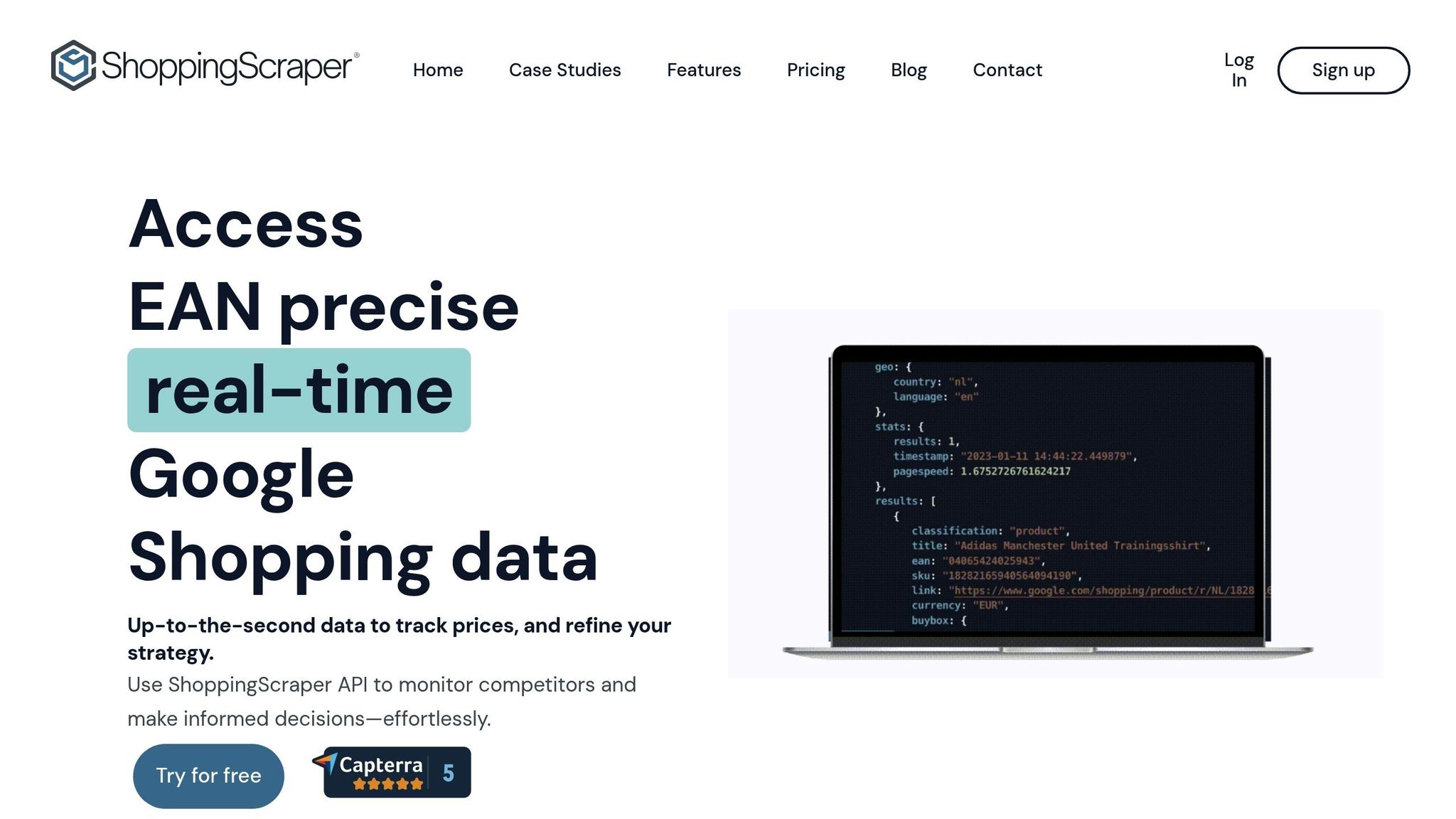
When it comes to launching a product, having access to accurate and timely data can make all the difference. ShoppingScraper simplifies the process of gathering essential e-commerce data, helping businesses make smarter decisions during their launch. By delivering real-time insights, it seamlessly integrates into your launch strategy to ensure you're always a step ahead.
Key Features of ShoppingScraper
ShoppingScraper is built to provide real-time e-commerce data scraping, tailored for businesses navigating competitive markets. It combines a straightforward web interface for manual data collection with an API that automates the process, making it flexible for various needs.
The API is designed for speed and flexibility, allowing unlimited data extraction whenever needed. This is particularly useful during product launches, where market conditions can shift multiple times a day. To ensure uninterrupted access, the platform mimics human browsing activity, reducing the likelihood of detection and ensuring consistent data flow.
For businesses in the U.S., ShoppingScraper is especially handy. It enables the extraction of pricing in USD, detailed product information, and seller data directly from Google Shopping's American marketplace. The data can be exported in JSON or CSV formats, making it easy to integrate with spreadsheets or business intelligence tools.
The platform has earned a stellar reputation, with users giving it an overall rating of 4.8/5, and 82% of reviews awarding it 5 stars. As Mark, a verified user, shared:
"Great support. Well-performing and reliable API."
Another standout feature is the automated scheduling option, which lets you set up regular data collection cycles. Whether you need updates every hour or daily competitor insights, this feature ensures you stay informed during critical launch periods.
How to Use ShoppingScraper for Product Launches
ShoppingScraper is designed to support every stage of your product launch, providing the data you need to adapt and succeed.
In the pre-launch phase, the platform helps you map out the competitive landscape. By identifying all sellers offering similar products on Google Shopping, you gain a clear understanding of market saturation and pricing trends. This allows you to position your product strategically and allocate resources more effectively.
ShoppingScraper also provides detailed product information, including full descriptions, specifications, and unique features. This data is invaluable for crafting compelling product descriptions and identifying gaps in the market that your product can fill.
During the active launch phase, the platform’s real-time monitoring becomes a game-changer. It helps you track the lowest prices for similar products, enabling you to adjust your pricing strategy on the fly. This agility can make a significant difference in a competitive market.
In the post-launch phase, ShoppingScraper continues to deliver value by tracking your product's performance over time. It monitors price trends, seller activity, product availability, and even search rankings. This data helps you evaluate the long-term success of your launch and pinpoint areas for improvement.
At a starting price of $49.00 per month, ShoppingScraper is accessible to businesses of all sizes. It offers enterprise-grade data intelligence without the hefty price tag, making it a practical choice for startups and established companies alike.
Additionally, the platform supports multiple regions, including key U.S. markets. Whether you're focusing on specific states or planning a nationwide rollout, ShoppingScraper provides localized insights to guide your distribution and marketing efforts. It’s a reliable partner for businesses looking to navigate the complexities of the American e-commerce landscape effectively.
Conclusion
Launching a product successfully requires making informed, data-driven choices at every step. And when it comes to understanding market trends, competitor pricing, and consumer behavior, Google Shopping data proves to be an invaluable resource.
Consider this: Google accounts for 36% of product searches and over 76% of retail search ad spending. On top of that, 68% of shoppers turn to Google to research specific products. This makes Google Shopping a direct link to high-intent buyers, offering businesses a unique opportunity to connect with their target audience.
From pre-launch research to post-launch analysis, Google Shopping data equips businesses with the tools to make smarter decisions. Want to find pricing opportunities? Keep an eye on competitors? Track your product’s performance in the market? This data transforms uncertainty into actionable strategies, giving you the edge to stay ahead. It also sets the stage for advanced tools that make launch strategies even more efficient.
Take ShoppingScraper, for example. With a 4.8/5 rating and real-time extraction capabilities, it simplifies the process of gathering competitor pricing, product details, and market trends. As Victor O., a Project Manager, shared:
"We use competitors prices feature from google shopping, and this help us to offer our customers the best product at the best price."
In the U.S., price comparison tools influence 22% of shopping decisions, and 65% of shoppers use mobile devices to compare prices while shopping. Google Shopping’s ability to display product information directly in search results makes it a cornerstone for successful product launches.
The real takeaway? Google Shopping data isn’t just a one-time tool - it’s an ongoing resource that should guide every stage of your launch strategy. From defining your market position to adjusting prices in real-time and optimizing long-term performance, embracing this data-driven approach gives businesses the ability to thrive in today’s competitive e-commerce landscape.
FAQs
How can businesses use Google Shopping data to optimize their product launches?
Businesses can tap into Google Shopping data to sharpen their product launch strategies by prioritizing accurate and detailed product information. Start by ensuring your listings feature high-quality images, compelling titles, and clear, concise descriptions that capture the attention of potential buyers.
Studying competitor pricing and product trends is another key step. This helps you set competitive prices and uncover gaps in the market. Keep a close eye on performance metrics, fine-tune your bids, and optimize your product feeds regularly to boost visibility and drive more conversions. Additionally, insights from shopping data can guide smarter inventory planning and more focused marketing efforts, setting the stage for a successful product launch.
What factors should I focus on to optimize my product feed for Google Shopping?
How to Optimize Your Product Feed for Google Shopping
If you want your products to shine on Google Shopping, there are a few key areas you should focus on:
- Crafting Product Titles and Descriptions: Use clear, keyword-rich titles and detailed descriptions that highlight your product's most important features. Think of this as your first impression - make it count.
- Providing Accurate Product Data: Double-check that all product identifiers (like GTIN and MPN) and attributes (such as size, color, and brand) are correct and up-to-date. Precision here can make all the difference.
- Using High-Quality Images: Include professional, well-lit images that follow Google’s image guidelines. A great photo can make your product impossible to ignore.
- Keeping Pricing and Availability Updated: Ensure your pricing is accurate and reflects real-time availability. Outdated info can lead to disapprovals or unhappy customers.
- Meeting Feed Compliance Standards: Stick to Google’s feed specifications, including formatting and required fields, to avoid any issues.
Beyond the feed itself, structuring your campaigns wisely and incorporating negative keywords can significantly boost your ad performance and return on investment. By fine-tuning these details, you’ll not only meet Google’s standards but also position your products for maximum visibility.
How can automated data monitoring support businesses during product launches on Google Shopping?
Automated data monitoring is a game-changer for businesses launching products on Google Shopping. It delivers real-time insights into key factors like pricing trends, competitor strategies, and product performance. With this information at their fingertips, companies can quickly tweak pricing, fine-tune product listings, and adapt to shifting market conditions.
Using automated tools simplifies decision-making, giving businesses a sharper competitive edge while boosting their return on investment. These insights are essential for pulling off a successful product launch and staying relevant in the ever-evolving world of e-commerce.
Related Blog Posts












